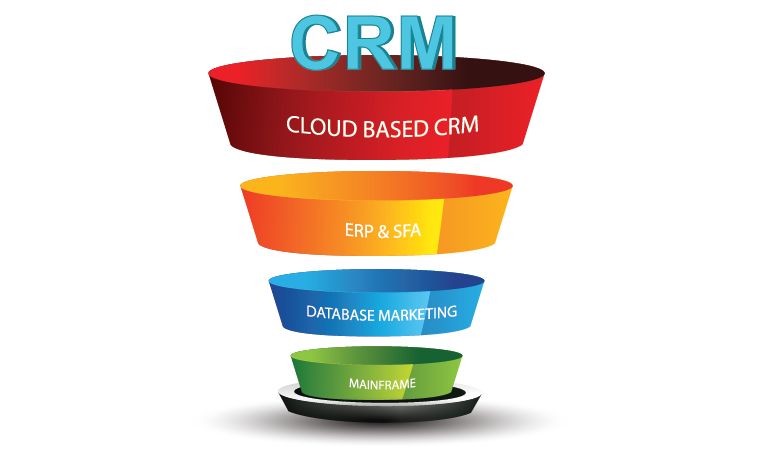Customer Relationship Management (CRM) systems have undergone significant transformation since their inception. At the heart of these systems lies the CRM dashboard—a critical tool for businesses to manage customer interactions, sales data, and overall business performance. The evolution of CRM dashboards reflects advancements in technology and the shifting needs of businesses. This article explores the journey of CRM dashboards, highlighting key milestones and future trends.
Early CRM Dashboards: Basic Beginnings
In the early days of CRM systems, dashboards were rudimentary. They primarily focused on basic data presentation, providing simple metrics such as sales figures, customer contacts, and interaction histories. These early dashboards were static, offering limited customization and interactivity. Businesses used them primarily to track sales performance and manage customer databases.
Key Features of Early CRM Dashboards
- Basic Data Visualization: Simple charts and graphs.
- Limited Customization: Static interfaces with minimal personalization options.
- Data Silos: Information often siloed, requiring manual data consolidation.
- Manual Data Entry: High dependency on manual input, prone to errors.
Despite their limitations, these early dashboards laid the groundwork for more advanced CRM functionalities. They helped businesses understand the importance of centralizing customer data and tracking interactions systematically.
The Rise of Interactive Dashboards
With technological advancements and the increasing availability of big data, CRM dashboards evolved to become more interactive and user-friendly. This phase marked a significant shift from static reports to dynamic, real-time data visualization.
Key Features of Interactive Dashboards
- Real-Time Data: Immediate updates, allowing businesses to make timely decisions.
- Enhanced Customization: Tailored views and reports to meet specific business needs.
- Integration Capabilities: Seamless integration with other business tools and databases.
- Interactive Elements: Clickable charts, drill-down options, and data filters.
Interactive dashboards empowered businesses to gain deeper insights into customer behavior and market trends. They facilitated proactive decision-making, enabling companies to respond swiftly to changing business environments.
The Era of Predictive Analytics
The integration of predictive analytics into CRM dashboards marked a revolutionary step forward. Predictive analytics uses historical data, statistical algorithms, and machine learning techniques to forecast future outcomes. This capability transformed CRM dashboards from tools of historical analysis to instruments of future strategy.
Key Features of Predictive Analytics Dashboards
- Forecasting: Predicting sales trends, customer behavior, and market movements.
- Data-Driven Insights: Leveraging data to uncover patterns and opportunities.
- Automation: Automated reporting and alert systems for proactive management.
- Enhanced Customer Segmentation: Identifying high-value customers and potential leads with greater accuracy.
These advancements allowed businesses to not only understand past performance but also anticipate future challenges and opportunities, thereby aligning their strategies accordingly.
Modern CRM Dashboards: A Comprehensive Overview
Today’s CRM dashboards are sophisticated platforms that offer comprehensive insights into every aspect of a business. They are designed to be intuitive, flexible, and integrative, catering to the diverse needs of modern enterprises.
Key Features of Modern CRM Dashboards
- Holistic View: Integrated data from various sources providing a 360-degree view of customer interactions.
- Advanced Analytics: Incorporation of artificial intelligence and machine learning for deeper insights.
- Mobile Accessibility: Cloud-based solutions enabling access from anywhere, anytime.
- User-Friendly Interface: Simplified navigation and customizable layouts for enhanced user experience.
- Actionable Insights: Clear, concise information that drives decision-making.
Modern dashboards are not just about data presentation; they are about data actionability. They enable businesses to translate insights into actions, thus driving growth and efficiency.
The Future of CRM Dashboards
The future of CRM dashboards promises even greater innovations. As technology continues to evolve, we can expect CRM dashboards to become even more intelligent and adaptive.
Key Trends Shaping the Future of CRM Dashboards
- Artificial Intelligence: Advanced AI algorithms for predictive and prescriptive analytics.
- IoT Integration: Connecting with Internet of Things (IoT) devices for real-time data.
- Voice and Conversational Interfaces: Voice-activated commands and chatbots for enhanced user interaction.
- Blockchain Technology: Enhancing data security and transparency.
- Hyper-Personalization: Tailoring experiences to individual customer needs and preferences.
These trends will further enhance the capabilities of CRM dashboards, making them indispensable tools for businesses aiming to stay competitive in a rapidly changing market.
Conclusion
The evolution of CRM dashboards from basic data presentation tools to advanced, intelligent platforms highlights the dynamic nature of business technology. Modern CRM dashboards are integral to business strategy, providing critical insights and facilitating informed decision-making. As we look to the future, the continued integration of advanced technologies promises to further revolutionize CRM dashboards, making them even more powerful and indispensable for businesses of all sizes.


